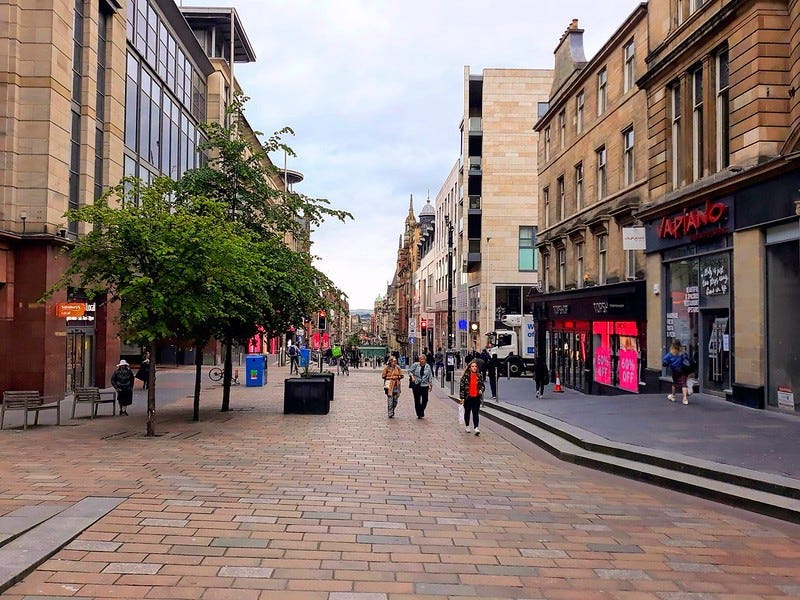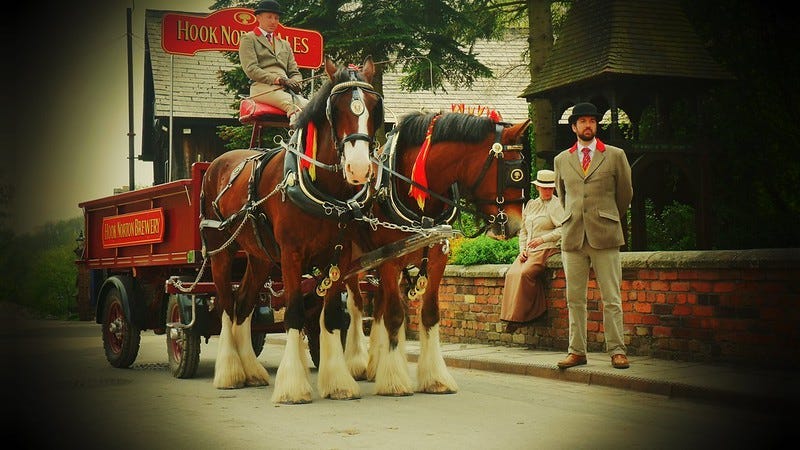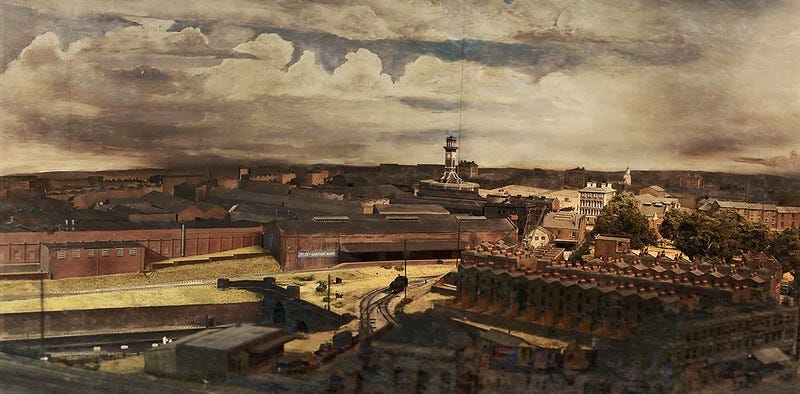How and Why I Do Historical Photography
Have you ever been fascinated by an old photograph and thought; “I wonder what that might have looked like in colour.” Colour is an important component of our lives, and of photography. It sets the mood and atmosphere of a scene. Of course, it is not absolutely essential, as can be illustrated by the fact that almost anyone can appreciate an old photograph notwithstanding its lack of colour. Old photographs are a valuable glimpse into a world that once was, and the way people lived back then. But when someone makes the effort to colourise an old photo or video, there’s a thrill of excitement, like a new dimension has just been added to the scene.
My first forays into photography were initiated as a boy growing up as a means of gathering images to illustrate history books which I envisaged myself one day writing. By the time I had come to leaving school, however, the practical challenges of such an undertaking seemed increasingly beyond the abilities of a school leaver to overcome, and, in the face of other interests, its priority waned.

Thus it could more accurately be said that it was in 2019 that I actually started to take a serious interest in photography as a hobby. It began, as it probably does for many photographers, with just wanting to record my travels — I had a particularly major trip in the middle of that year which saw me spend time in Blackpool and Glasgow before traversing the highland roads to Oban to spend a week sailing the now ill-fated Lord Nelson, the first of two tall ships built for the Jubilee Sailing Trust, itself unfortunately succumbing to administration in the wake of the Covid pandemic and subsequent political upheavals. Later that year, I would also return to my native South Africa for the first time since moving to the UK five years earlier.
More pertinently during this time, however, was a growing interest in architecture and urban planning, and in particular, the principles of New Urbanism, which I’ve recently chronicled in another article, and the realisation that photography could be a powerful medium to showcase interesting examples of New Urbanist principles and their application in the real world.
My interest in historical photography developed naturally from there. New and Neo-Traditional Urbanism, along with the wider views of social Traditionalism with which I generally agree and for which I stand depend for their spread on a reevaluation of history, realising that progress is not always in the best direction, and that sometimes, a turning back is needed so that we can establish the course of human history on the right track once again. An old photograph can do much to aid this shift in public opinion, eliciting memories and a sense of nostalgia for the charm of a bygone age, a charm to which we could return as long as humanity is placed front and center, before economy as much as possible. A new photograph exploring a historical subject and showing it up with the clarity of modern digital imagery and editing can offer a completely different perspective on our past.

One might be tempted to think of such an enterprise as a hobby, and not much good for one trying to make photography his business, but I’d counter that with the observation that on one hand, historical photography is something of an untapped, if small niche within the content creation industries, and on the other, that it’s part of a slightly wider focus on photography as a storytelling medium for commercial marketing.
Let’s start by explaining the latter point, as it’s slightly simpler. Behind my photography enterprise (and for that matter, any other enterprise to which I might turn my attention) is the mission to empower small-scale entrepreneurship through niche marketing, and by so doing, catalyse a return of time-tested, but barely surviving principles of traditional principles of economic and cultural life that center around the all-round well-being of the ordinary man on the street. Heritage has, in my view, a big part to play here, with its associations of quality and sustainability, and the unique stories of the people and businesses taking a leaf from the past and preserving it for the present and the future. Those are the stories that call or a sense of history on the part of the photographer, creating images (and even footage) that capture in both composition and character the timeless charm of yesteryear and the work of those preserving it in little pockets scattered across the landscape of modernity.
Such a thought might understandably sound backward, but this returns me to my former objective of producing photojournalistic work for editorial and educational purposes, and indeed part of what garnered my interest in the genre in the first place. Historical photography can show both the charm and challenges of life in bygone years, and that empowers people to consider in today’s world what of yesterday they would keep, part with, or revive. Have you ever seen a YouTube video or newspaper or magazine article dealing in some topic of history, illustrated with some historical relic isolated in a sea of modernity, in its current context? There’s nothing wrong with that, but don’t you think the job would be better done by an image that genuinely presents the past as it was, taking the viewer or reader back and immersing them in the era covered?

That’s what I thought, and that’s what I have wanted my currently in development blog and podcast, Michael’s Mission to be. It can be heard to find readily available visual images and footage to cover historical topics; much more so if the content is being created ultimately support a commercial enterprise, and since I couldn’t always find the visuals I was looking for, I decided to launch into creating my own, and making an enterprise of it.
Such an enterprise involves two main strategies. Firstly and most obviously, there is the approach of photographing and filming historical reenactments in period-appropriate settings, such as museums or other areas whose history is well preserved. Secondly is the approach of filming or photographing scale model diorama scenes, capturing bird’s-eye views of landscapes, and even ground level scenes that might otherwise be difficult to recreate. Up until now I have been doing this by attending public events such as historical reenactments and model railway exhibitions (often a rich source of landscape imagery covering the last two centuries), but looking forward, I am also working on a project, subject to financial wherewithal, to organise historical photoshoot scenes that can be made available on a commercial basis.
For anyone wishing to support such a mission, I regularly post my photography to my social feeds, and I am working to get my photography and videography can be found on most major stock media agencies, as well as on my dedicated photography website. For those wishing to collaborate and/or commission work, I can be contacted via the email on my website at mjalford.online.


